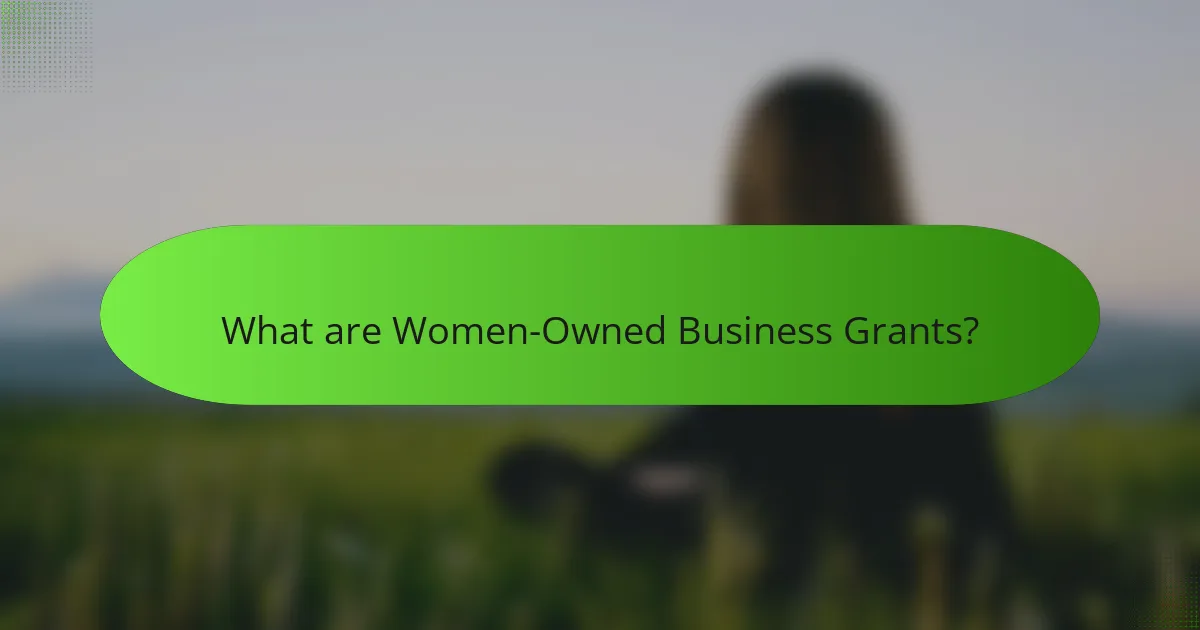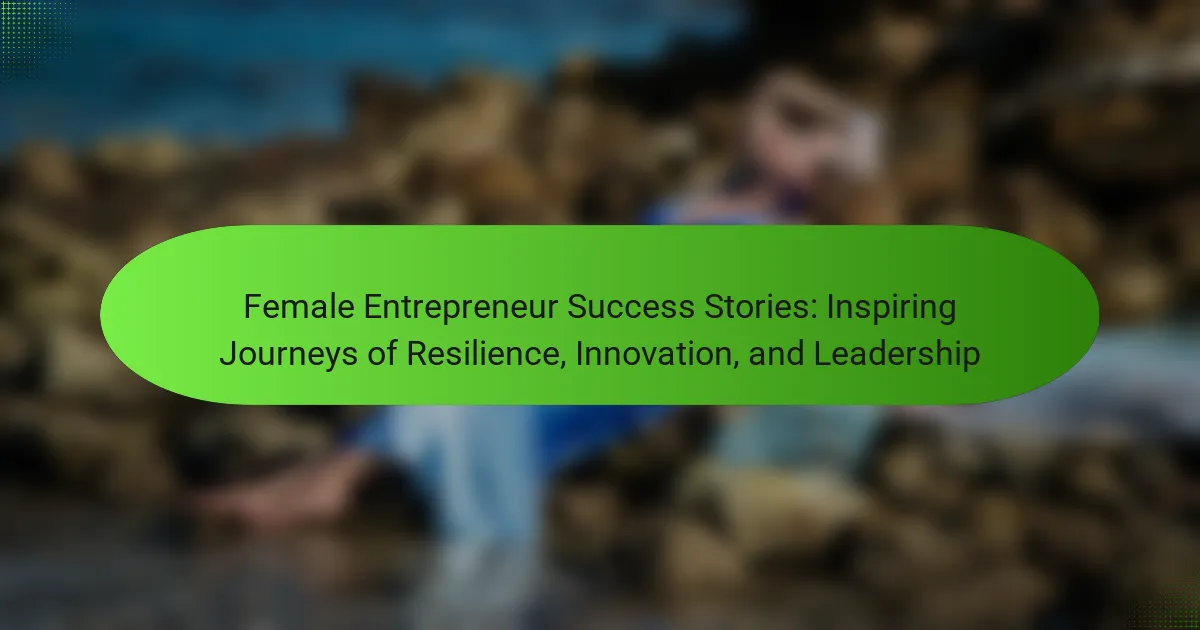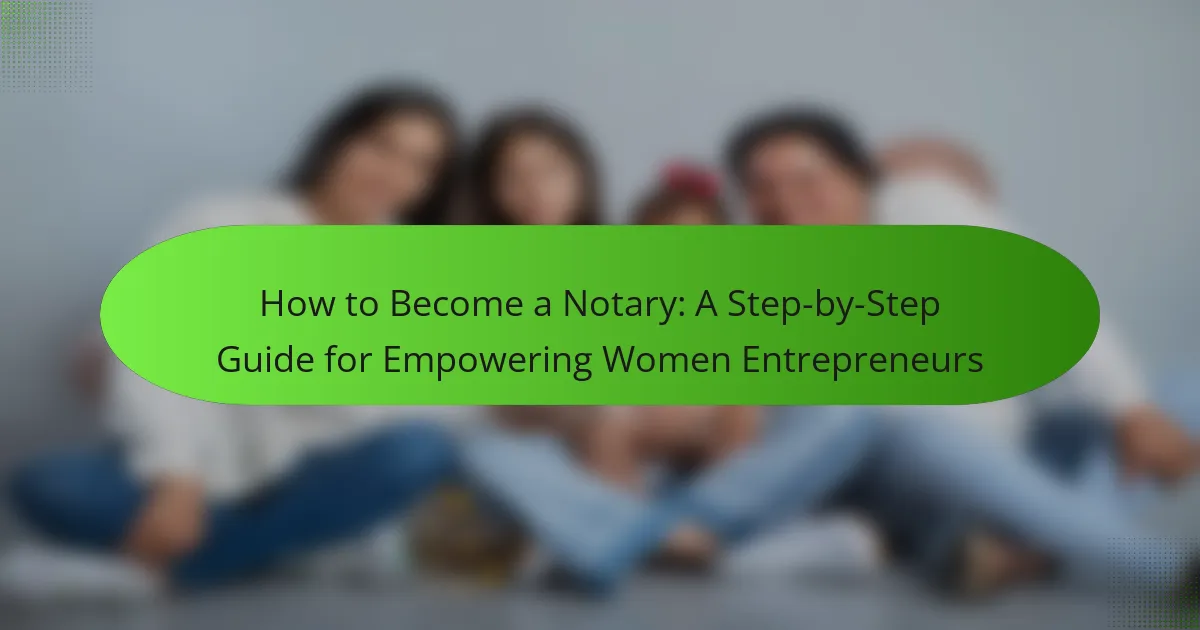Women-owned business grants provide crucial funding opportunities for female entrepreneurs, addressing financial barriers and promoting growth. These grants offer flexible use of funds, mentorship, and networking opportunities. They prioritise underserved communities, enhancing access to capital and fostering economic diversity. Additionally, trends show an increasing focus on sustainability and innovation within grant programmes, further supporting women-led businesses.

What are Women-Owned Business Grants?
Women-owned business grants provide financial support specifically for female entrepreneurs to foster growth and innovation. These grants can cover various expenses, including startup costs, operational expenses, and project funding. According to the National Women’s Business Council, women-owned businesses are the fastest-growing segment of the U.S. economy, increasing by 21% from 2014 to 2019. Unique attributes of these grants include eligibility requirements that often prioritise underserved communities, enhancing access to capital for diverse female founders. As a result, women-owned business grants empower female entrepreneurs, enabling them to unlock funding and fuel their business growth.
How do these grants differ from traditional funding?
Women-owned business grants differ from traditional funding by offering non-repayable financial support specifically aimed at empowering female entrepreneurs. Unlike loans, these grants do not require repayment, reducing financial risk. Additionally, grants often focus on specific industries or initiatives that promote gender equality and economic growth. Traditional funding typically involves interest rates and collateral requirements, which can be barriers for women entrepreneurs. Grants prioritise accessibility and inclusivity, making them a unique funding option for women-led businesses.
What types of businesses qualify for these grants?
Women-owned businesses that demonstrate a commitment to growth and community impact qualify for these grants. Eligible businesses typically include startups, established companies, and nonprofits led by women. Specific criteria often encompass business size, revenue limits, and industry focus. For example, some grants prioritise technology, healthcare, or sustainable enterprises. Additionally, certain grants may require applicants to be in historically underserved areas.
What are the common sources of funding for women-owned businesses?
Women-owned businesses can access various funding sources to support their growth. Common sources include government grants, private foundations, crowdfunding platforms, and venture capital specifically targeting female entrepreneurs. Each source offers unique benefits, such as non-repayable funds from grants or investment opportunities from venture capital. Additionally, organisations like the Small Business Administration provide resources tailored for women-owned businesses, enhancing their access to financial support.

What are the universal benefits of Women-Owned Business Grants?
Women-owned business grants provide essential financial support, fostering growth and empowerment for female entrepreneurs. These grants reduce financial barriers, promote innovation, and enhance business sustainability.
One unique benefit is the access to mentorship and networking opportunities, which often accompany grant programmes. Female entrepreneurs can gain valuable insights and connections that drive success.
Additionally, these grants contribute to economic diversity, supporting the growth of women-led businesses in various sectors. This diversification can lead to increased job creation and community development.
Lastly, women-owned business grants often prioritise underserved communities, ensuring equitable access to funding and resources. This focus on inclusivity helps level the playing field for female entrepreneurs.
How do these grants support business growth?
Women-owned business grants significantly enhance business growth by providing essential funding, resources, and support. These grants empower female entrepreneurs to expand operations, invest in marketing, and hire talent, directly impacting revenue and sustainability.
For instance, studies show that women-owned businesses receiving grants experience an average growth rate of 20% over three years. This financial boost enables them to innovate and compete effectively in their markets.
Moreover, these grants often include mentorship programmes, networking opportunities, and training, which are unique attributes that foster long-term success. By addressing barriers faced by women in business, these grants create a more equitable economic landscape, benefiting communities and economies as a whole.
What financial relief do grants provide?
Grants provide essential financial relief by offering non-repayable funds to women-owned businesses. This funding supports operational costs, product development, and marketing efforts, enabling growth and sustainability. For instance, many grants target specific sectors, enhancing opportunities for female entrepreneurs. Access to these funds can significantly reduce financial barriers, fostering innovation and empowerment in the business landscape.
How do grants enhance business credibility?
Grants enhance business credibility by providing validation from established organisations. This recognition boosts trust among customers and partners. For women-owned businesses, receiving grants signals a commitment to quality and innovation. As a result, these businesses can attract more clients and investors, fostering growth.

What unique opportunities do Women-Owned Business Grants offer?
Women-owned business grants provide unique opportunities by offering financial support specifically designed to empower female entrepreneurs. These grants often come with fewer restrictions than traditional loans, allowing for flexible use of funds. Additionally, they foster networking and mentorship opportunities, connecting women with resources and communities that promote growth. Many grants also focus on specific industries, encouraging innovation and diversity in the marketplace. Ultimately, these grants not only fuel business growth but also contribute to closing the gender gap in entrepreneurship.
What specialized grants are available for minority women entrepreneurs?
Various specialized grants are available for minority women entrepreneurs, designed to provide financial support and promote business growth. Notable options include the Amber Grant, which awards $10,000 monthly to women entrepreneurs, and the Comcast RISE Investment Fund, offering marketing consultations and media placements. The SBA 8(a) Business Development Program is another valuable resource, focusing on minority-owned businesses. Additionally, the National Association for the Self-Employed (NASE) provides grants specifically for minority women, encouraging innovation and expansion. These grants empower female entrepreneurs by addressing unique challenges and fostering economic growth.
How do grants support specific industries?
Grants significantly support women-owned businesses by providing essential funding that fuels growth and empowers female entrepreneurs. These grants often target specific industries, addressing unique challenges faced by women in sectors like technology, healthcare, and retail. For example, in 2021, women-owned businesses received over $5 billion in grants, enabling them to expand operations and innovate. Additionally, grants can cover startup costs, marketing expenses, and workforce development, fostering a more inclusive entrepreneurial ecosystem. By focusing on women-owned businesses, grants help bridge the funding gap and promote gender equity in various industries.

What rare attributes make some grants stand out?
Some grants stand out due to unique attributes like specialized eligibility criteria, innovative funding structures, and additional resources for business development. These features enhance the appeal and effectiveness of women-owned business grants, providing tailored support that goes beyond traditional funding. For instance, grants that include mentorship programmes or networking opportunities can significantly impact a female entrepreneur’s success. Additionally, some grants may prioritise businesses that focus on sustainability or social impact, setting them apart in a competitive landscape.
What are the unique eligibility criteria for exclusive grants?
Women-owned business grants often have unique eligibility criteria that prioritise women entrepreneurs. Key criteria include being at least 51% women-owned, demonstrating a viable business plan, and having a track record of business operations. Some grants may require specific industry focus or geographic location. Additionally, unique attributes may include the need for applicants to demonstrate social impact or community engagement.
What innovative funding models are emerging for women entrepreneurs?
Innovative funding models for women entrepreneurs include grants, crowdfunding, and impact investing. These approaches enhance access to capital and support business growth.
Grants specifically designed for women-owned businesses often focus on underserved communities. For instance, the Amber Grant provides $10,000 monthly to women entrepreneurs, along with a year-end $25,000 grant.
Crowdfunding platforms like Kickstarter and Indiegogo allow women to raise funds directly from supporters, fostering community engagement. This model empowers female entrepreneurs by validating their business ideas through public interest.
Impact investing focuses on generating social and environmental benefits alongside financial returns. Organisations like SheEO pool resources to fund women-led ventures, creating a sustainable ecosystem for female entrepreneurship.

How can women entrepreneurs effectively apply for grants?
Women entrepreneurs can effectively apply for grants by understanding eligibility criteria, tailoring applications to specific funders, and showcasing their business impact. Research potential grants thoroughly and prepare necessary documentation, including a solid business plan and financial statements. Highlight unique attributes of your business that align with grant goals to stand out. Engage with grant-making organisations for insights and feedback to strengthen your application.
What essential documents are needed for a successful application?
To successfully apply for women-owned business grants, you need specific documents. Essential documents include a business plan, financial statements, tax returns, proof of business ownership, and identification. These documents demonstrate your business’s viability and your eligibility for funding.
How can storytelling enhance grant applications?
Storytelling enhances grant applications by creating emotional connections and illustrating the impact of funding. Engaging narratives showcase the unique attributes of women-owned businesses, highlighting their challenges and successes. This approach can significantly increase the chances of securing funding, as it resonates with grant reviewers. Effective storytelling also emphasizes the potential benefits of the grant, demonstrating how it will fuel growth and empower female entrepreneurs.
What common mistakes should be avoided during the application process?
To successfully navigate the application process for women-owned business grants, avoid common mistakes that can hinder funding opportunities. First, ensure that your business plan is clear and well-structured, highlighting your unique value proposition. Second, pay close attention to eligibility criteria; applying for grants for which you do not qualify wastes time and resources. Third, submit all required documentation; incomplete applications are often rejected. Lastly, adhere to deadlines; late submissions are typically disqualified, regardless of merit.

What are the best practices for maximizing grant funding?
To maximize grant funding for women-owned businesses, focus on thorough research, clear proposals, and strong networks. Identify grants aligned with your goals and ensure compliance with all requirements. Tailor your application to highlight unique attributes of your business, such as innovation and community impact. Engage with local organisations that support female entrepreneurs to enhance your visibility and access to resources.
How can grant recipients leverage funds for long-term growth?
Grant recipients can leverage funds for long-term growth by strategically investing in their business infrastructure, marketing, and talent development. Focus on building a solid foundation that supports scalability and sustainability.
Investing in technology enhances operational efficiency, while targeted marketing campaigns increase brand visibility. Additionally, allocating funds for training and development empowers employees, fostering innovation and retention.
Establishing partnerships with other women-owned businesses can create networking opportunities and collaborative growth. As a result, these strategies not only maximize the impact of grant funding but also contribute to the broader economic empowerment of female entrepreneurs.
Monitoring financial performance and adjusting strategies based on data ensures continued growth and adaptability in a dynamic market.
What strategies can be employed to track funding usage?
To track funding usage effectively, implement systematic monitoring and reporting strategies. Establish clear metrics for financial performance, including budget adherence and expenditure analysis. Utilize project management tools to maintain transparency and accountability. Regular audits can also ensure compliance and identify areas for improvement.
How can networking enhance grant opportunities?
Networking significantly enhances grant opportunities for women-owned businesses by fostering connections with potential funders and collaborators. Building relationships within the entrepreneurial community allows female entrepreneurs to access valuable resources and insights. Networking can lead to partnerships that strengthen grant applications, demonstrating credibility and support. Additionally, sharing experiences and strategies with peers can improve proposal quality, increasing the likelihood of securing funding. Engaging in industry events and online platforms expands visibility, making it easier for women-owned businesses to discover and apply for available grants.
What resources are available for ongoing support after receiving a grant?
Women-owned businesses can access various resources for ongoing support after receiving a grant. These include mentorship programmes, networking opportunities, and business development workshops that enhance skills and growth. Additionally, organisations like the Small Business Administration (SBA) and local chambers of commerce offer guidance and resources tailored to women entrepreneurs. Access to online forums and support groups can also provide valuable peer connections and advice.

What future trends should women entrepreneurs anticipate in grant funding?
Women entrepreneurs should anticipate an increase in targeted grant programmes focusing on sustainability and innovation. Trends indicate a shift towards funding that supports green initiatives and technological advancements. Additionally, collaboration between private sectors and government will likely enhance access to funding opportunities. Women-led businesses may also benefit from mentorship programmes linked to grant funding, fostering community support and resource sharing.
How might the landscape of women-owned business grants evolve by 2025?
The landscape of women-owned business grants will likely expand significantly by 2025, driven by increased support for female entrepreneurs. Funding opportunities may diversify, with more grants targeting specific industries and demographics. Government initiatives and private sector partnerships are anticipated to enhance accessibility and awareness of these grants. Additionally, innovative funding models, including micro-grants and crowdfunding platforms, could emerge, empowering women to pursue entrepreneurial ventures. This evolution aims to create a more equitable business environment, fostering growth and sustainability for women-owned businesses.
What role will technology play in grant applications and management?
Technology will streamline grant applications and management for women-owned businesses. Digital platforms enhance accessibility, allowing entrepreneurs to submit applications efficiently. Automated tracking systems provide real-time updates on funding status, improving transparency. Data analytics tools can identify funding opportunities tailored to specific business needs, empowering female entrepreneurs to make informed decisions. Furthermore, technology fosters collaboration among stakeholders, enhancing resource sharing and support networks.
How can women entrepreneurs prepare for changing funding landscapes?
Women entrepreneurs can prepare for changing funding landscapes by adapting their strategies and understanding new opportunities. Staying informed about emerging grant programmes and funding sources is crucial. Networking with other female entrepreneurs and industry experts can provide insights and support. Additionally, leveraging technology to streamline applications and track funding trends enhances competitiveness. Engaging in continuous education about financial management and grant writing can also empower women-owned businesses to secure necessary funding effectively.



